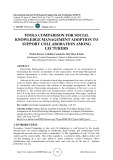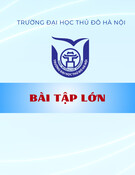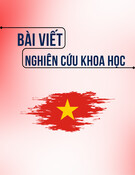
http://www.iaeme.com/IJMET/index.asp 726 editor@iaeme.com
International Journal of Mechanical Engineering and Technology (IJMET)
Volume 10, Issue 03, March 2019, pp. 726–737, Article ID: IJMET_10_03_076
Available online at http://www.iaeme.com/ijmet/issues.asp?JType=IJMET&VType=10&IType=3
ISSN Print: 0976-6340 and ISSN Online: 0976-6359
© IAEME Publication Scopus Indexed
TOOLS COMPARISON FOR SOCIAL
KNOWLEDGE MANAGEMENT ADOPTION TO
SUPPORT COLLABORATION AMONG
LECTURERS
Marisa Karsen, Cadelina Cassandra, Desi Maya Kristin
Information Systems Department, School of Information System
Bina Nusantara University, Jakarta, Indonesia 11480
ABSTRACT
Knowledge Management is one important component of an organization in
determining the internal development of the organization. Knowledge Management
enables organizations to collect, store, distribute, and reuse the knowledge that a
company's assets have.
Likewise in the area of education, knowledge management has now evolved to be
easier to deploy. Many colleges have tried to figure out how to use social computing
to collaborate with educators and students in knowledge management. The most
frequent problem of knowledge management is the willingness of the user to use or
distribute it. The collaboration and communication aspects of social computing or
web 2.0 is the basic successful use of knowledge management. This paper conducted
an analysis about the best tools and technology that can be adopt as social knowledge
management system for lecturer in doing collaboration among units and other
lecturers. As the result, one existing technology found suitable for lecturers to be used.
Key words: knowledge management, social computing, web 2.0
Cite this Article: Marisa Karsen, Cadelina Cassandra, Desi Maya Kristin, Tools
Comparison for Social Knowledge Management Adoption to Support Collaboration
among Lecturers, International Journal of Mechanical Engineering and Technology
10(3), 2019, pp. 726–737.
http://www.iaeme.com/IJMET/issues.asp?JType=IJMET&VType=10&IType=3
1. INTRODUCTION
Nowadays, Social Computing or also web 2.0 technology is well known by the people.
Internet users use social computing to collaborate, share content, and communicate easily
through the network and even form a community [1]. The capabilities of web 2.0 now also
widely used by various fields. One of the example is e-commerce field, which is utilize web
2.0 that bringing up a new term which is social commerce. Social Commerce allows
collaboration and communication between users and even can be the one of business
promotion way [2].





















